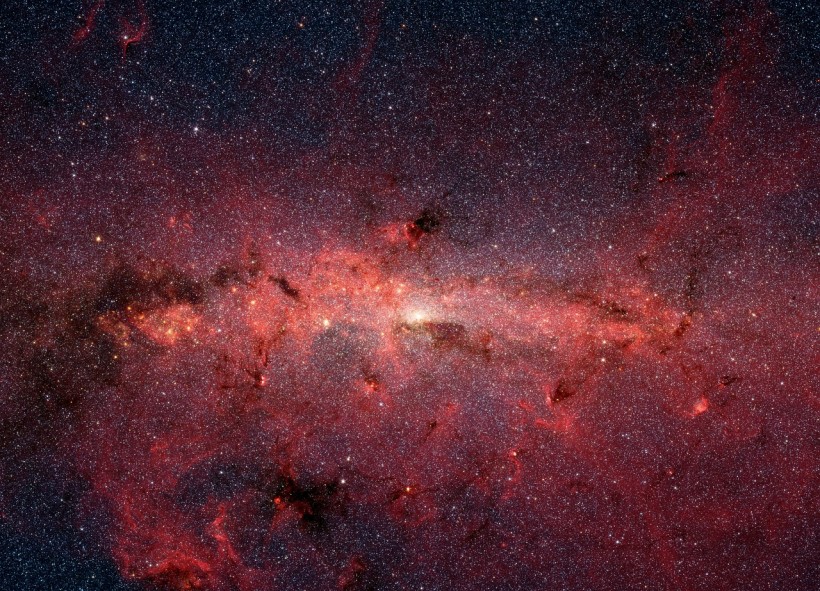Astronomers have unveiled fresh insights into the properties of the giant galactic bubbles extending high above and below the Milky Way galaxy. These immense, symmetrical gas formations are known as the eROSITA bubbles, named after the telescope that first spotted them in 2020, resemble an hourglass, and emit faint X-ray illumination.
The bubbles exist within the galaxy's extensive shell of gas, known as the "circumgalactic medium," extending roughly 45,661 light-years on both sides of the galactic center.

Galactic Bubbles Surrounding the Milky Way: New Evidence of Their Properties Provide Information To Study History of Stars
Revisiting the Archive of 230 X-Ray Observations of the Galactic Bubbles
Initially, it was believed that the giant bubbles of energetic gas had a relatively uniform, albeit high temperature due to their passage through the surrounding medium. However, Science Alert reported that the new findings indicate that the bubbles are more complex than initially thought.
Data from the Suzaku satellite, jointly operated by NASA and JAXA, suggests that the X-ray glow of the bubbles is not a result of their higher temperature, but rather the higher density of the gases they contain.
Astronomer Anjali Gupta, from Columbus State Community College in Ohio, explains in a news release that the study aimed to enhance the understanding of the circumgalactic medium, which plays a crucial role in the formation and evolution of our galaxy. The research focused on regions near the bubbles to compare their properties with those farther away.
By analyzing the archived dataset of 230 X-ray observations of the bubbles and their surroundings, the researchers found that the previous method used to estimate temperature was inadequate.
The assumption of a temperature difference between the eROSITA bubbles and the galactic halo based on their relative brightness was overturned. The new analysis revealed that the brightness is a result of the higher gas density within the bubbles, rather than their temperature.
READ ALSO: Unique Telescope Captures First-Ever X-ray Imaging of the Milky Way, Including Spectacular Nebula and Blackholes
Formation and Evolution of the Galactic Bubbles
The findings of the study, titled "Thermal and chemical properties of the eROSITA bubbles from Suzaku observations" published in the journal Nature Astronomy, provide insights into the formation of the bubbles and challenge a previous hypothesis regarding their origin, which points to a supermassive black hole.
On the other hand, the new study suggests that the presence of non-solar ratios of neon-oxygen and magnesium-oxygen in the bubble shells hints that nuclear star formation or the injection of energy from massive stars and other astrophysical phenomena played a significant role in their creation.
This contradicts the earlier idea that the eROSITA bubbles were formed by a supermassive black hole and its associated activities. As per Science Daily, the abundance of non-solar ratios discovered in the shells strongly supports the theory that the bubbles originated from intense star formation activity at the galactic center.
Dr. Smitha Mathur, one of the researchers involved in the study, emphasized that their data favors star formation as the primary mechanism for bubble formation rather than black hole activity.
To further explore the implications of their findings in other areas of astronomy, the team plans to utilize data from upcoming space missions and develop novel analytical approaches. The goal is to better understand the structure and properties of the bubbles by refining models and constraining temperature and emission measures through different techniques, as highlighted by Dr. Gupta.
RELATED ARTICLE: New 3D Map of Local Bubble Reveals Its Magnetic Field Structure That Will Help Examine Superbubbles in Novel Ways
Check out more news and information on Space in Science Times.














